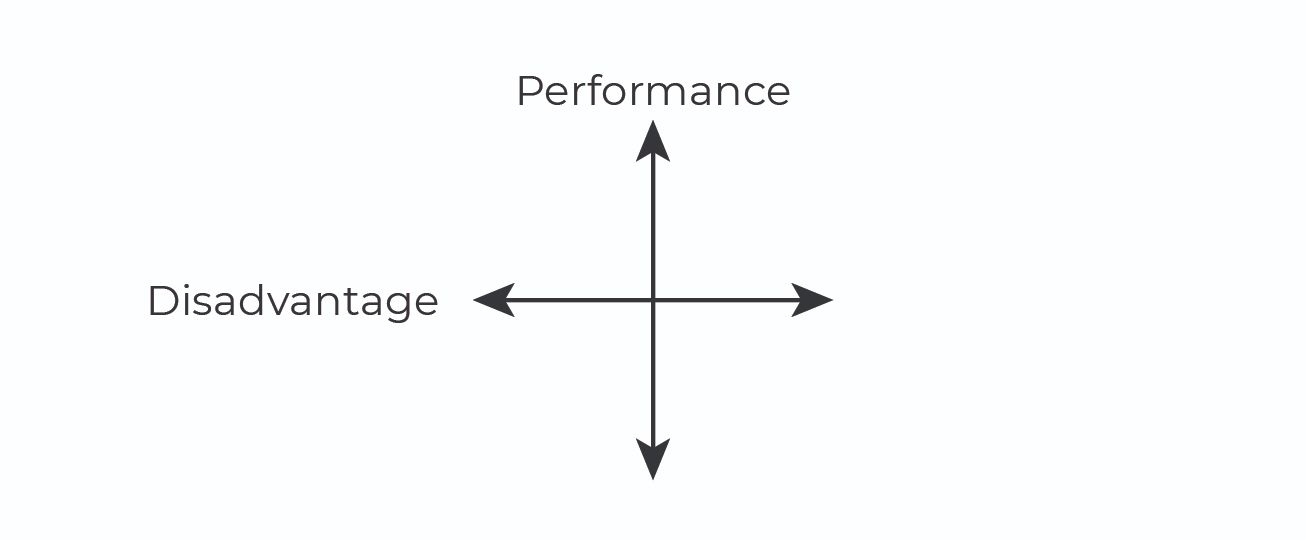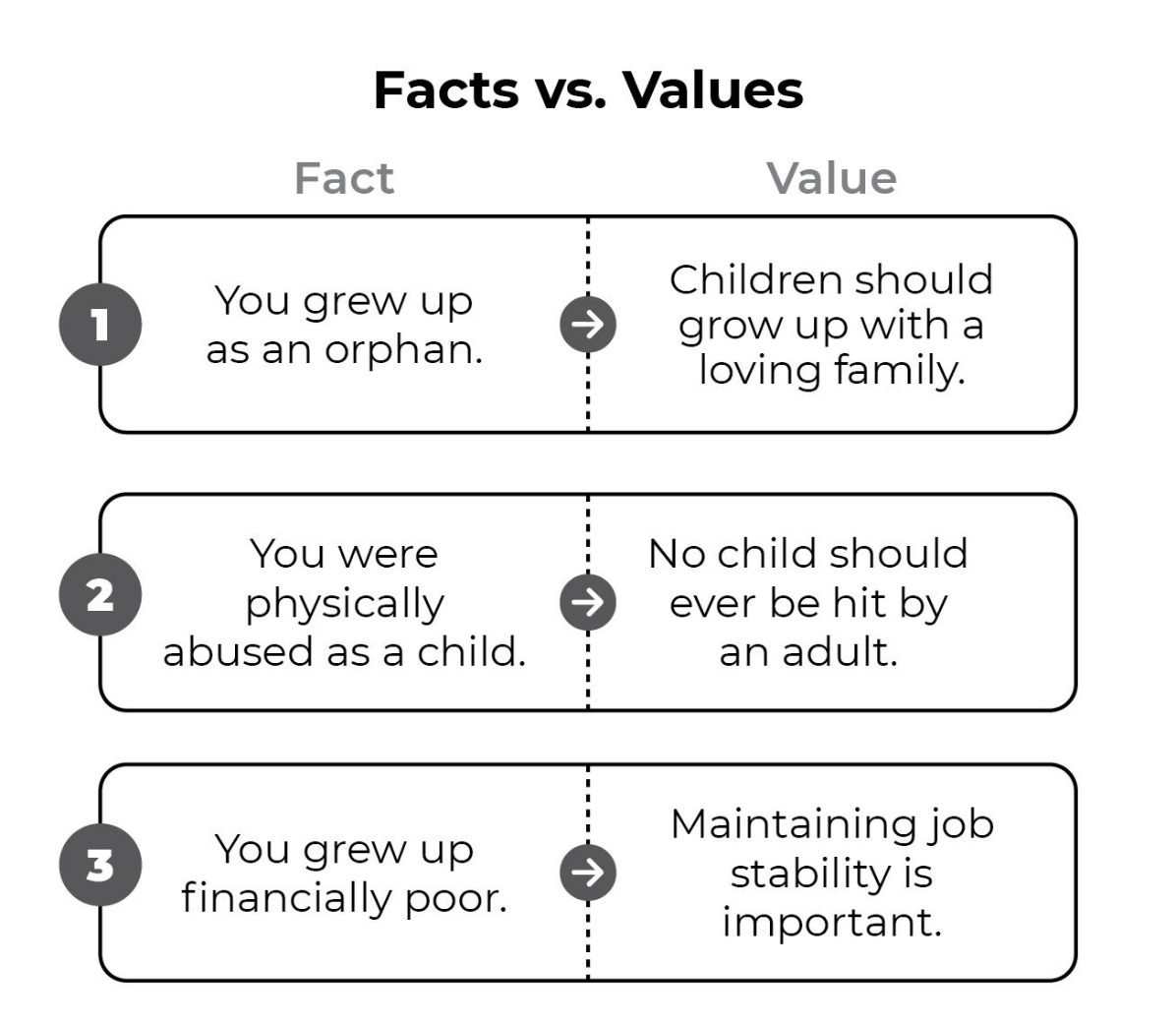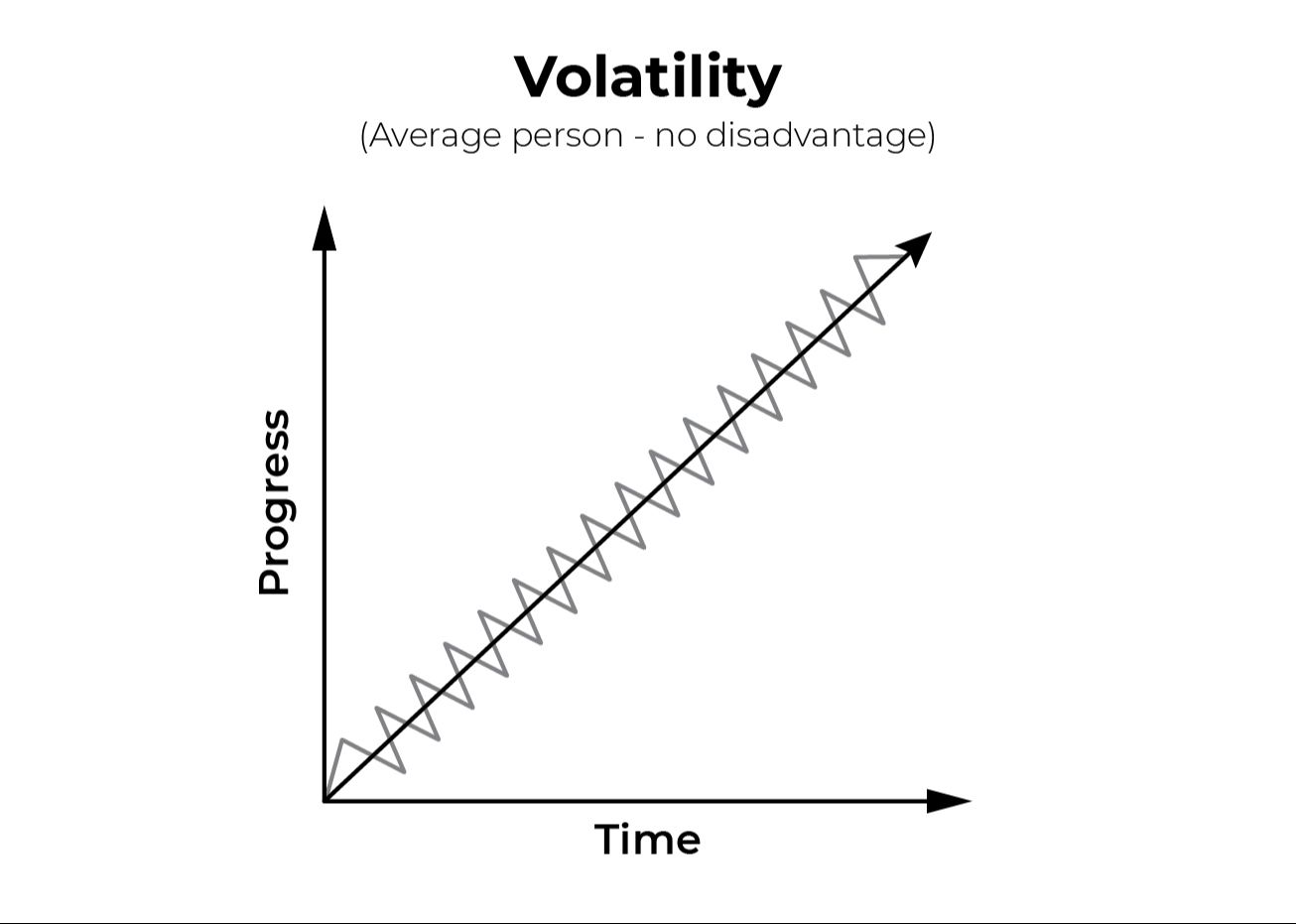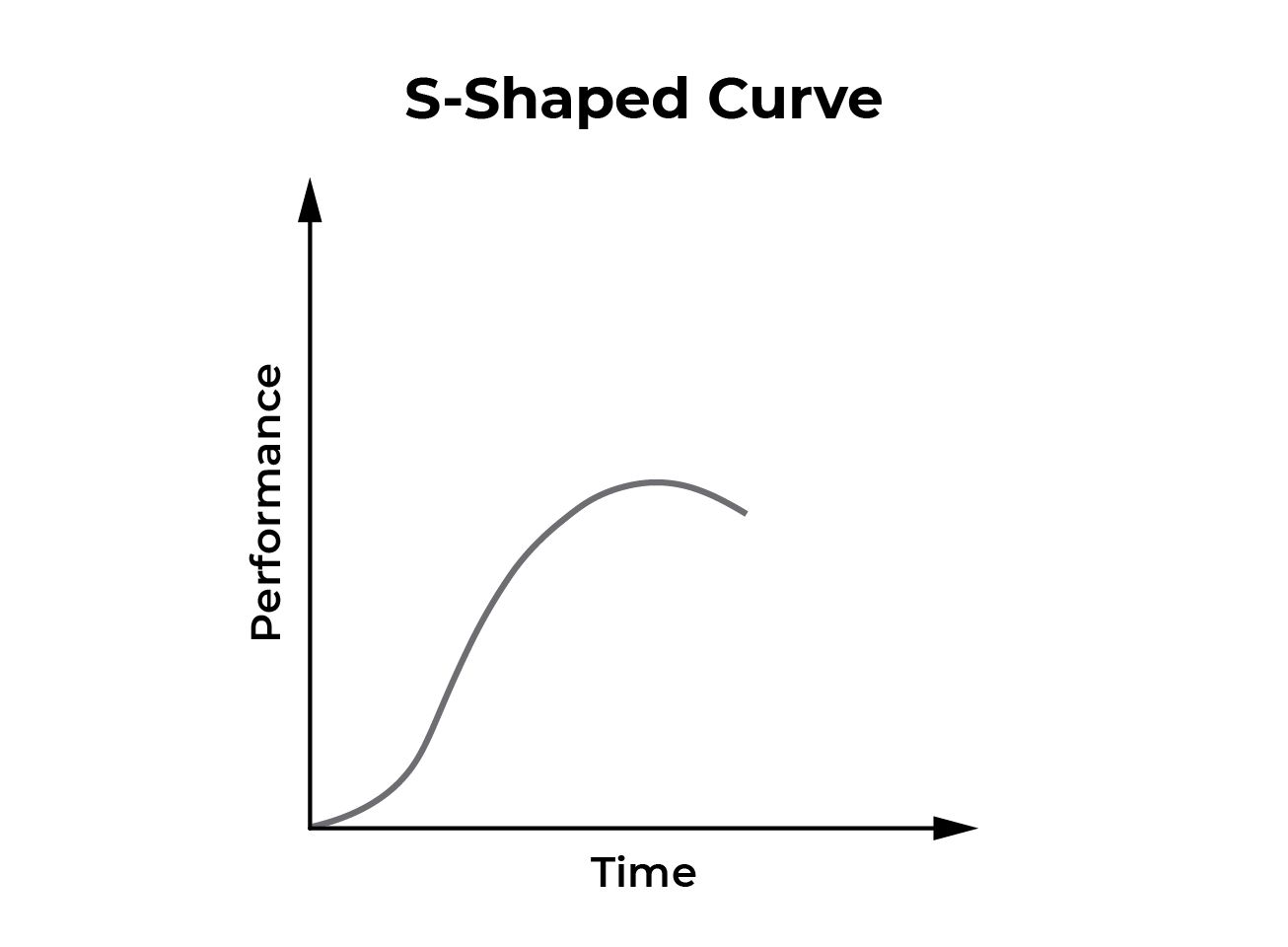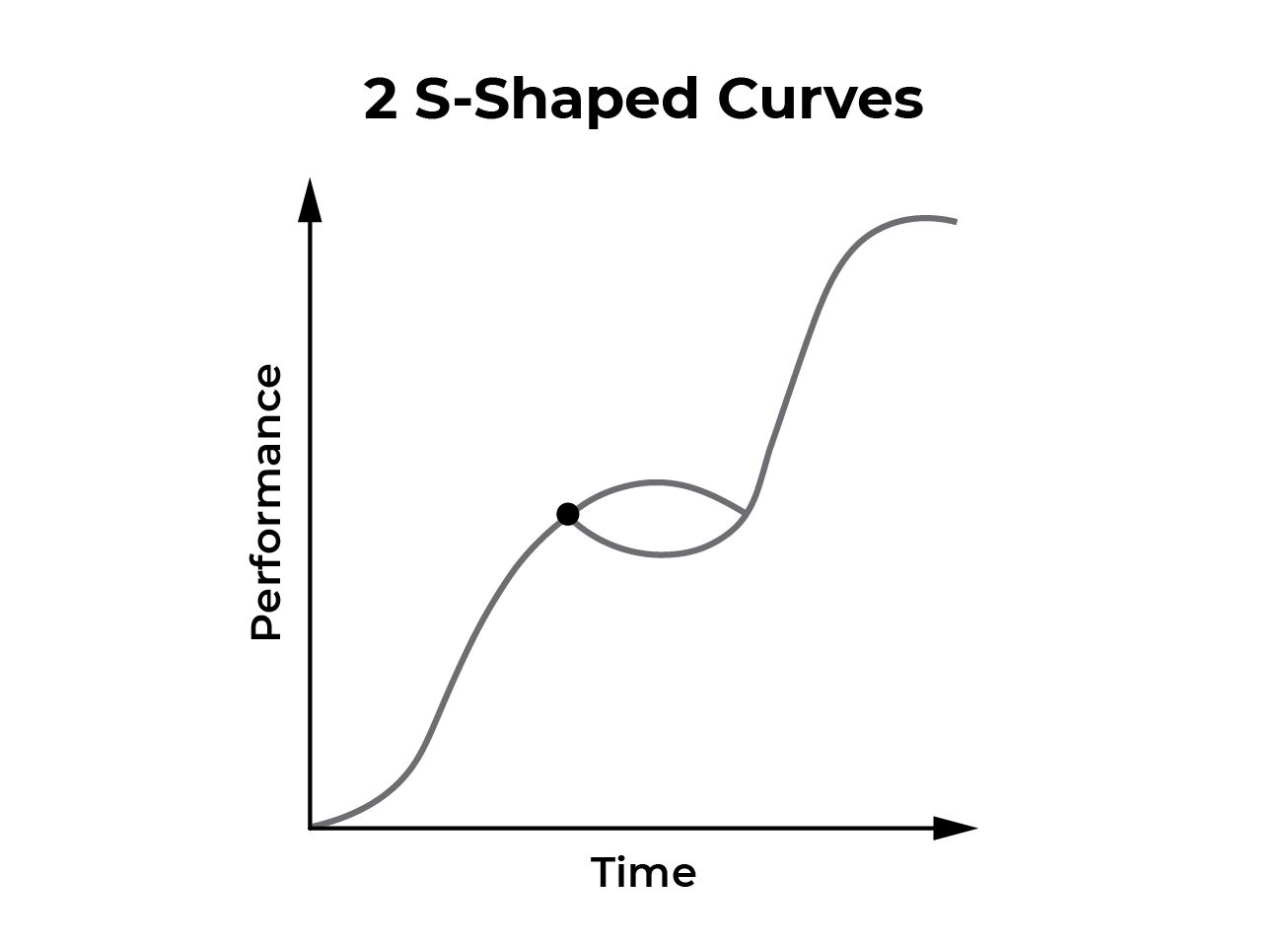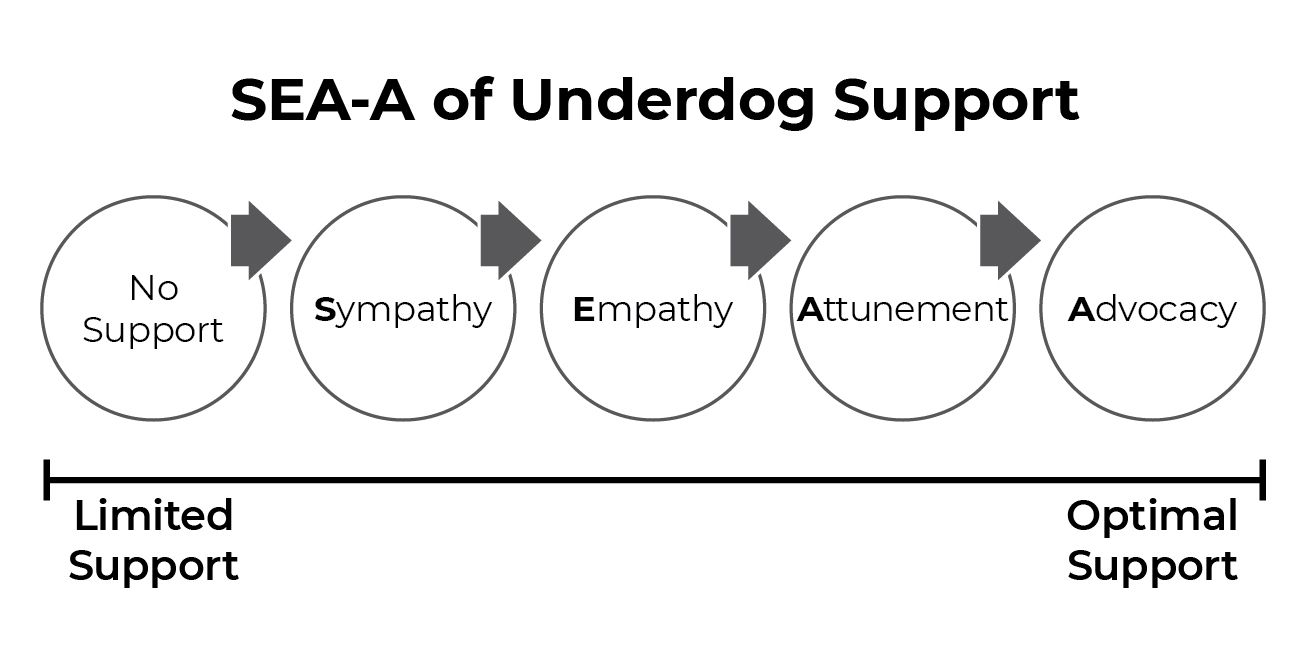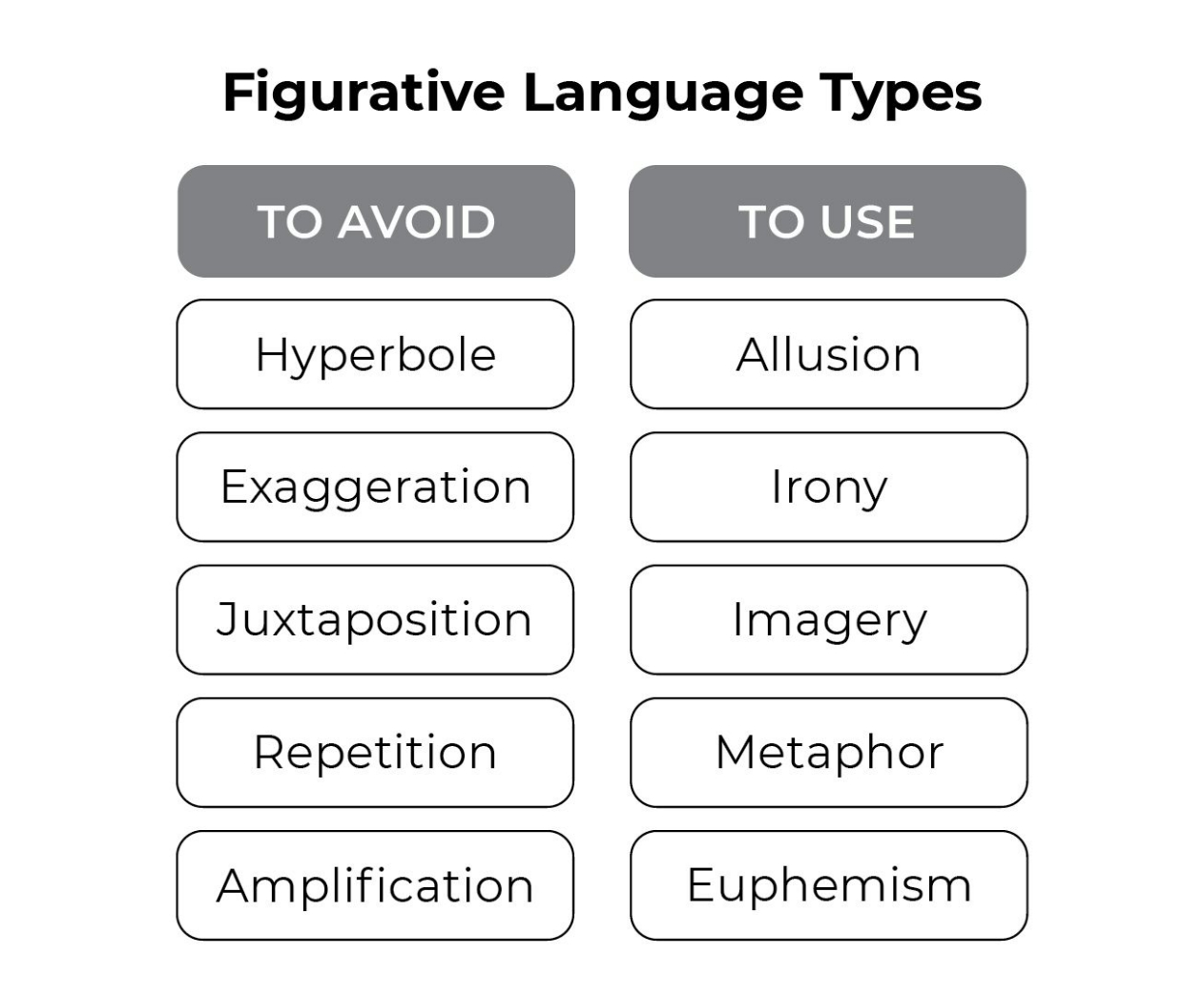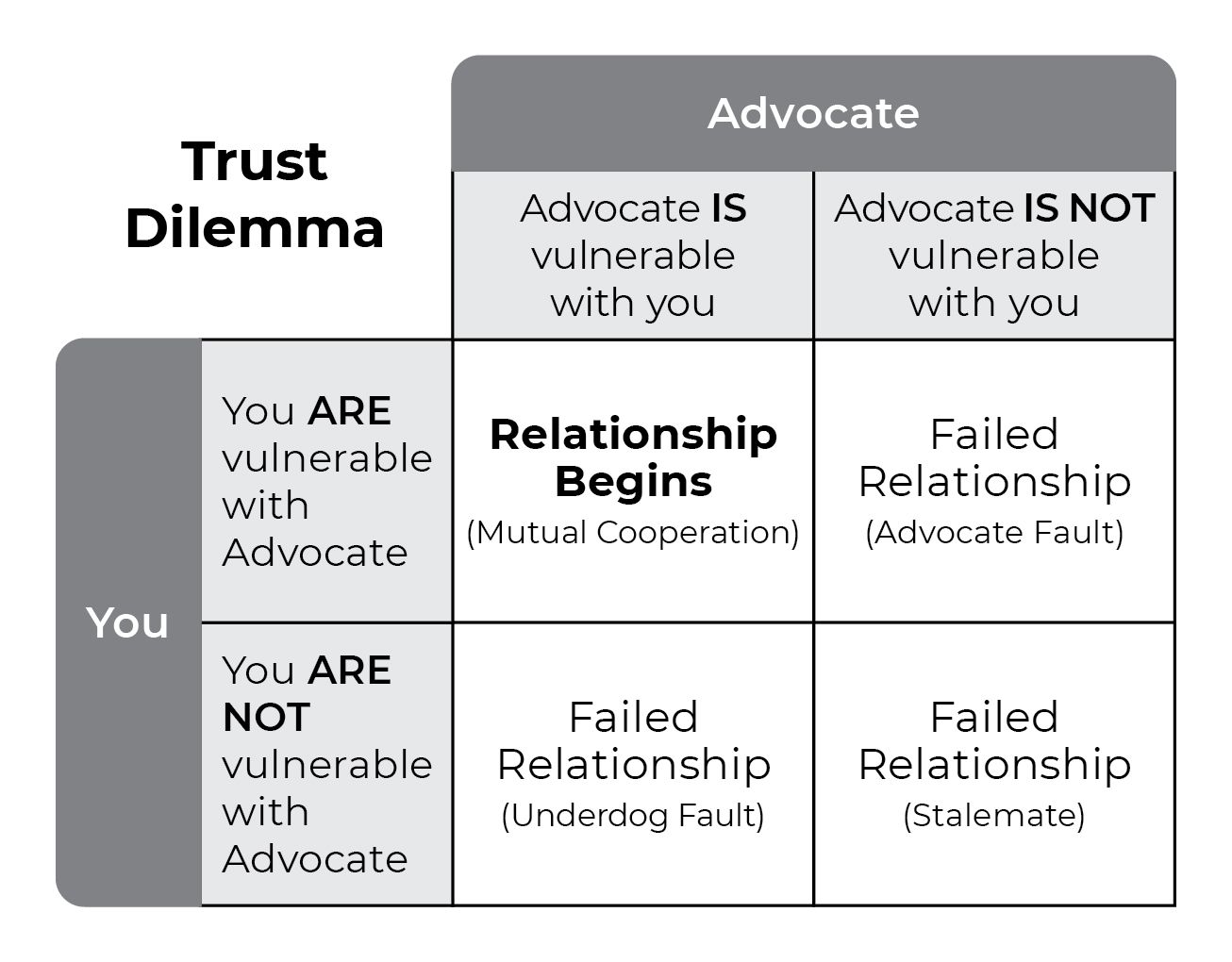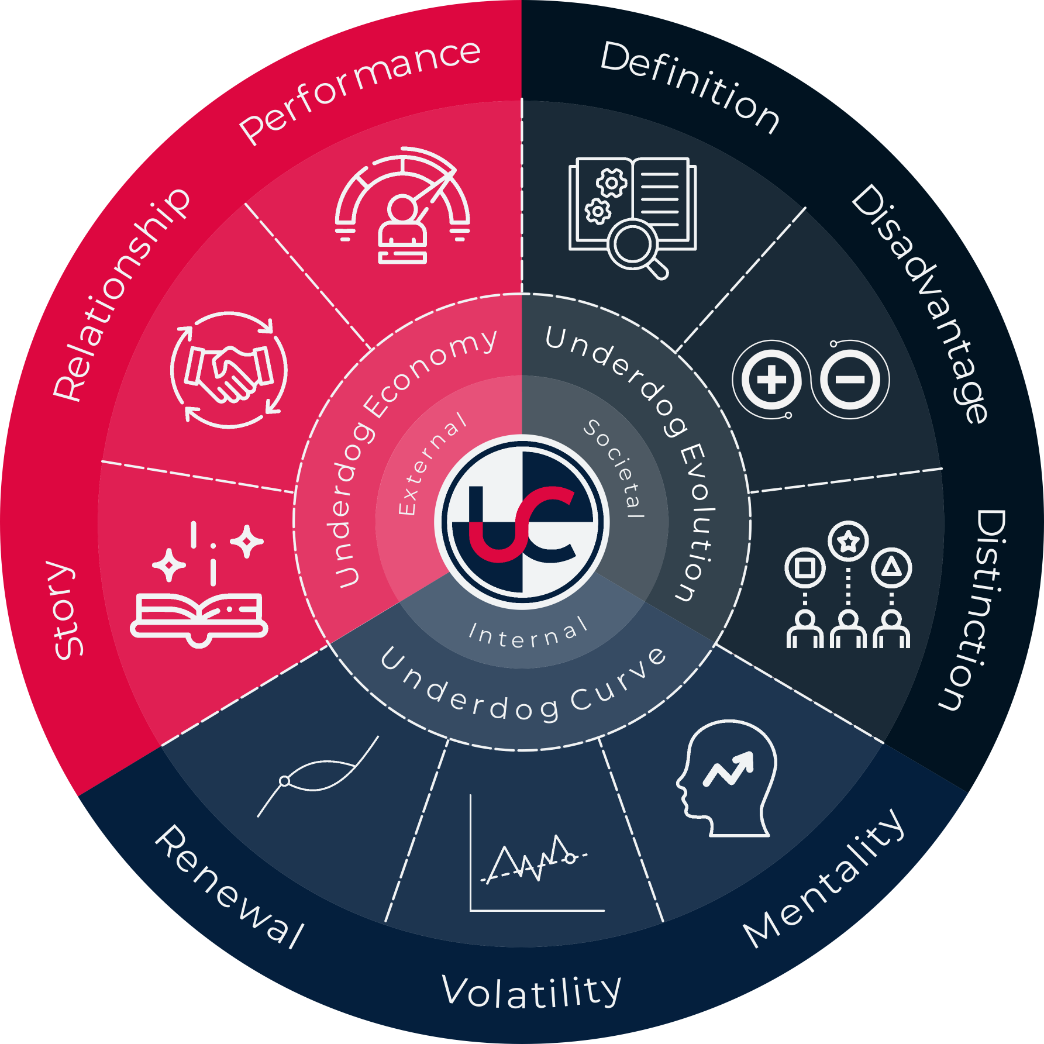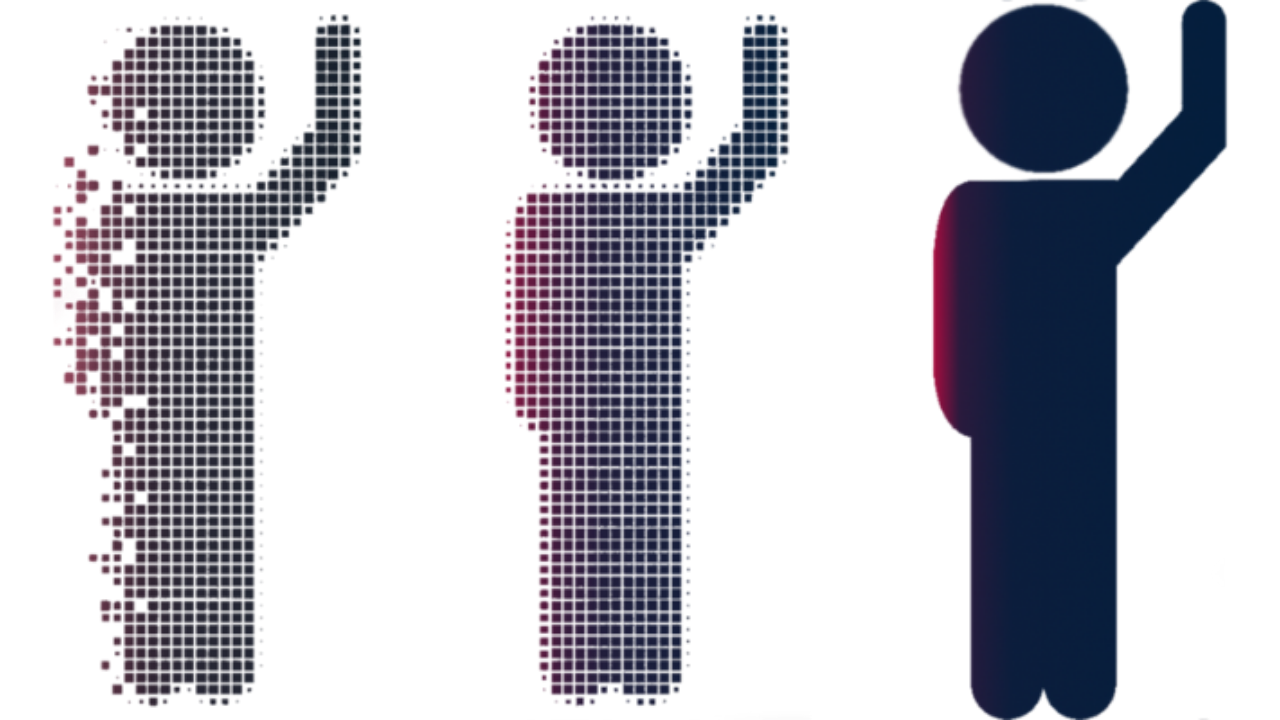Welcome to the Underdog Curve - Free Book Materials
PDF Book Images
"The Underdog Curve" - Chapter Summaries
Chapter 1 - "Underdog" - An Enhanced Definition
- Existing underdog definitions reinforce inaccurate or negative underdog associations and stereotypes.
- Remember that underdogs seek opportunities, while losers/victims avoid them.
- Avoidance is typically characterized by retreating, reacting, or remaining.
- Embrace and implement the components of your new eight-part underdog definition as a source of practical empowerment.
Chapter 2 - Disadvantage Creates 3 Types of Underdogs
- Being disadvantaged can be either voluntary or involuntary—the way it shows up in your life determines what kind of underdog you are.
- There are three types of underdogs—acute, complex, and contextual. Each has a distinct set of experiences and challenges to overcome their unique type of disadvantage.
Chapter 3 - The Science of Underdog Distinction
- The sensation of feeling like an underdog is tangible and backed up by social science.
- Each of us fits into one of four broad categories of relative advantage or disadvantage within the Archetype Performance Model.
- Underdogs demonstrate a defining set of characteristics—disadvantage and performance, which are driven by passion, determination, resilience, and perseverance.
- Top Dogs are to Privileged Achievers as Victims are to Underdogs—only the degree of disadvantage separates their starting points.
Access Chapter 3
Chapter 4 - Navigating Social Headwinds
- Recognizing the three principles of the Law of Underdog Conflation (universal relatability, co-opt, and temporal) can help you navigate social headwinds and effectively compete for support. Understanding these is critical to your long-term success.
- Discerning between disadvantage and circumstance is the starting point of underdog recovery. Trauma culture confuses relatively common negative circumstances with more enduring disadvantages. Avoid falling into this trap when considering your own experiences.
- The AIR Framework can be used as an experience filter to help you put the events of your life into their appropriate context. Then, you can objectively consider how a particular life event is or should be impacting you today.
Access Chapter 4
Chapter 5 - Think Like An Underdog
- Personal awareness is a critical mental starting point in the underdog evolution.
- The facts of our experiences and our resulting values should be monitored and aligned to work for us, not hold us back.
- Recognizing we are in control of our emotions and our response to situations serves to empower underdogs.
- Our mindset dictates what we get out of life—act accordingly.
- Very few things in life are simply black and white. Embrace the nuance to create mental capacity for your own thoughts, hopes, dreams and ambitions.
- Mind your words and phrases for both your mental health and to improve the receivability of your story.
Chapter 6 - How to Recognize Black Swans
- Underdogs have experienced enough extreme volatility in their lives; avoid unwittingly adding unnecessary negative volatile events that will hold you back.
- Underdogs should look to avoid visibly displaying the “chip on their shoulder” in their thoughts, words, and actions if they want to earn valuable opportunities.
- There is no virtue in starting over just because you can. Stop rationalizing decisions that put you in a position to lose everything because you think you have nothing to lose.
Chapter 7 - The Cinderella Moment
- Every underdog experiences a turning point when they must decide they are not going to remain a victim any longer and that they are instead going to do something new and different to reach their goals—this is your Cinderella Moment.
- The road to underdog achievement is paved with the investments made in your mental health, education, and habits. All performance development stems from a commitment to these three areas.
- Self-evaluation is a difficult but necessary and valuable aspect of personal improvement.
Chapter 8 - Entering The Underdog Curve
- The five phases of our personal or professional performance flow through Development, Improvement, Proficiency, and Declination. Or, if we’re vigilant and intentional, we can avoid Declination and move into a state of Renewal instead.
- The Underdog Curve can be a powerful metaphorical tool used to help us evolve from the trajectory we’re on today to the new one we seek—without giving up what we’ve worked so hard to earn.
- Internal Underdogging and Enacting are more healthy and productive ways to engage with yourself and others, instead of defensiveness or bearing a “proverbial chip on your shoulder.”
Chapter 9 - The Market for Underdogs
- There is a market for underdogs, just as there are markets for any other good or service. Underdogs act as the supplier, and Advocates serve as the action-oriented demanders.
- Being a Credible Contender is what makes underdogs eligible to earn the support and advocacy they need from others.
- Be wary of superficial underdog support, which is really about the selfish motives of the supporter and not about helping to move your goals forward.
- There are well-intentioned people, too, ready to help you make progress if you’ll only let them.
- There are four kinds of support—Sympathy, Empathy, Attunement, and Advocacy. Your goal is to develop advocates over time, while avoiding supporters only interested in providing sympathy.
Access Chapter 9
Chapter 10 - Authentic Stories
- Underdogs have two stories about our lives—a private one we tell ourselves and a public version we share with others.
- Recraft your public and private stories with intentionality—ones that will empower you and inspire others while always removing victimhood.
- Share your story only to pique the curiosity of others, hint at your adversity, and always leave ’em wanting more.
- Be intentional about with whom you share your story and why you’re sharing it. The Flyover, Jump Altitude, and Tandem Landing framework will help you convey the appropriate version for your specific audience.
Chapter 11 - Intentional Relationships
- No matter what we say, no underdog can make it on their own—we all require the support of others to make it through this life.
- Be willing to be vulnerable first and avoid the pitfalls of the Trust Dilemma.
- Trusting can be difficult for underdogs, but it’s a necessary component of successful relationship development.
- Mindful transparency, visible character, and embracing the support of others are the cornerstones of letting others know who you are and what you care about.
Chapter 12 - Differentiated Performance
- Avoid the trap of the tyranny of low expectations of others by always minding your performance motivations.
- Whether we like it or not, small actions done consistently over time manifest as our performance.
- While specialization has its place, there is everyday value for underdogs to be skilled in multiple disciplines or domains.
- Differentiation is the key to getting noticed, standing out from the crowd, and proving you’re ready and capable for new opportunities.
- Become a Credible Contender by leveraging the use of the five underdog points of differentiation—functional creativity, do hard things, be mindfully transparent, be a disagreeable giver, and let your actions speak for your performance.
Free Bonus - The "5-Minute Underdog Makeover"
(Mini-Course)



